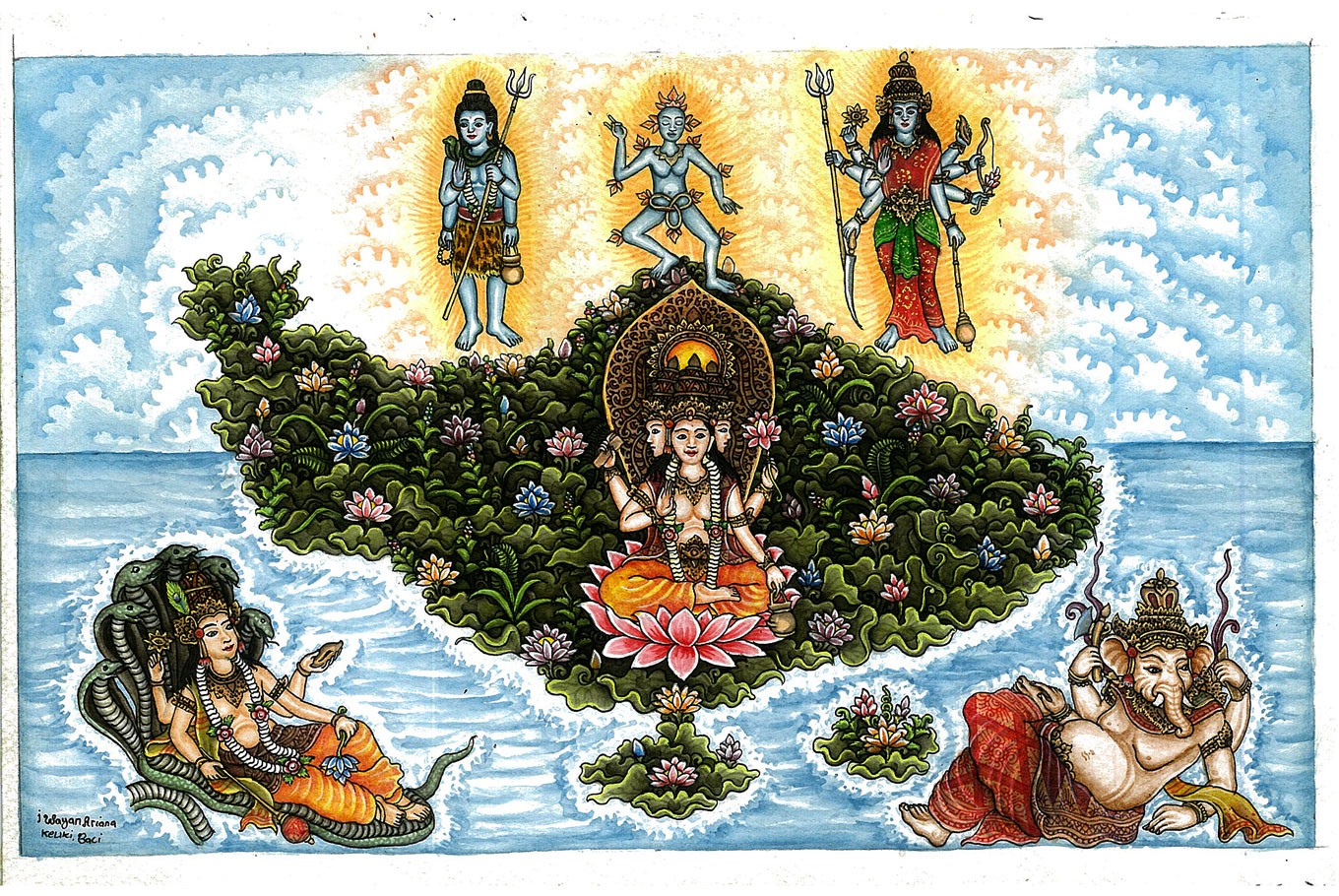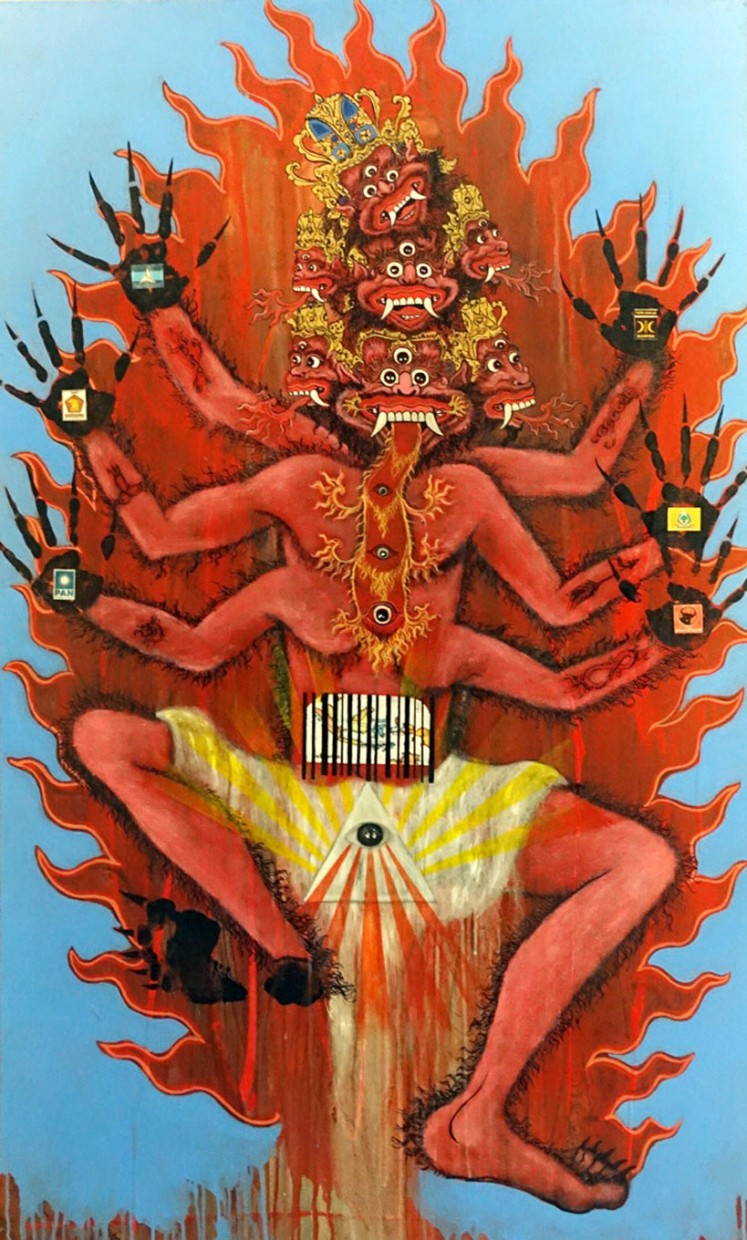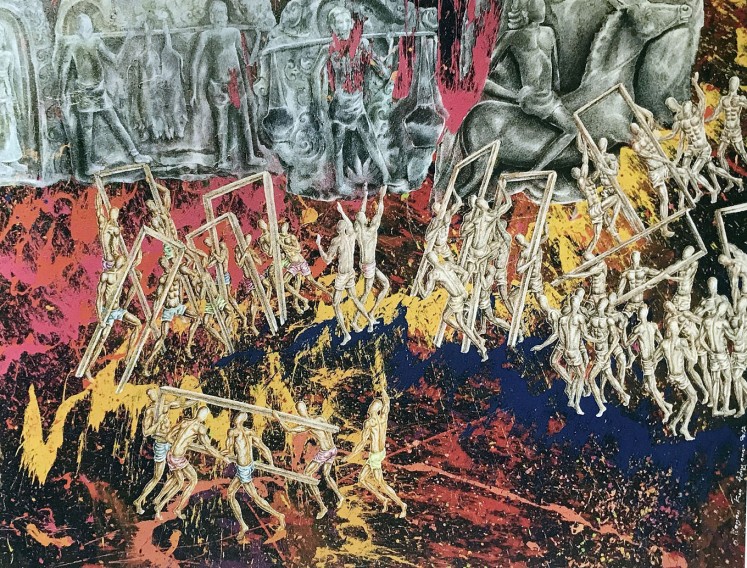Popular Reads
Top Results
Can't find what you're looking for?
View all search resultsPopular Reads
Top Results
Can't find what you're looking for?
View all search resultsColorful narratives of the visual art
Change text size
Gift Premium Articles
to Anyone
Three exhibitions showcase Balinese artists’ diverse interests, viewpoints
Three ongoing exhibitions held in conjunction with the 2017 Ubud Writers and Readers Festival (UWRF) are an undisputed testament to the diversity of the island’s visual art landscape.
“Despite its nature as a literary gathering, UWRF has always offered ample space for the visual arts,” Mudra Swari Saraswati foundation chairman Ketut Suardana said.
The foundation is the organization behind the UWRF and the Ubud Food Festival. A restaurateur who owns Casa Luna and Indus, two of Ubud’s established eateries, Ketut is also an ardent art collector, owning an extensive collection of Balinese paintings and sculptures.
One of the exhibitions is taking place at Casa Luna. Titled Bali Cosmology: Aesthetic and Educative Art, the exhibit is unique because it features the works of a family of artists: Made Bayak, his wife Komang Kartika Dewi, and their 11-year-old son, Damar Langit Timur.
Made (Instagram handle @madebayak) is one of the most influential visual artists of his generation. Born 1980 in Tampaksiring, Gianyar, he is a man of many talents (he moonlights as the guitarist for rap-rock band Geekssmile) and a passionate environmental activist. His paintings and music are the manifestation of his political credo: A fiery opposition against a corrupt state, prejudiced society, greedy investors and ecological destruction.
Plasticology, a series of Made’s paintings incorporating plastic trash and educational workshops targeting youngsters, has drawn large support locally and abroad. His masterpiece in the ongoing exhibit is Politik Dasamuka(Dasamuka Politic), referring to Dasamuka, the alias of Rawana, the demonic and evil king of Alengka and archnemesis of Rama in the Hindu epic poem Ramayana. It portrays a ten-headed giant with Indonesia imprisoned inside his belly and his six blackened hands bearing the symbols of the country’s political parties.
Politik Dasamuka by Made Bayak (JP/I Wayan Juniarta)Some 500 meters to the west, in LittleTalks (@littletalksubud), a charming library café overlooking Tjampuhan river, a young painter I Wayan Ariana (@nanoeari_art) tries to shine a light on the monotheistic element of Balinese Hinduism in Ekam Sat Viprah Bahudha Vadanti, an exhibition of paintings on Hindu deities done in Keliki style.
Named after a village north of Ubud, the style was conceived in the 1970s by a local farmer, I Ketut Sana. Keliki-style paintings are mostly done on paper with Chinese ink and generally depict a romantic interpretation of daily life in the island’s rural villages, the beauty of the island’s flora and fauna, as well as Hindu myths and local folklore. It is famous for its rich gradations and extreme detail, both of which demand hours of prolonged concentration from the painter.
“Balinese Hinduism boasts such a large number of deities that non-Balinese often mistake it for a polytheistic religion. We need to educate them that all those deities are only the manifestations of one ultimate Creator, which we call here Ida Sang Hyang Widhi Wasa,” he said.
He then pointed out at his painting Acintya (The Incomprehensible One) and stated that human’s language and knowledge is so limited and imperfect that it cannot define the limitless and perfect nature of the god.
The third exhibition is Candra Sangkala (Chronogram) by Wayan Kun Adnyana (@kunadnyana) at the Neka Art Museum (NAM). Presented as a reinterpretation of ancient relief’s visual codes in contemporary painting, the works on display show an amalgamation of Kun’s visual traits of faceless human figures with themes and figures inspired by the island’s ancient relief.
The works were created following months of extensive research, during which Kun visited Yeh Pulu and Goa Gajah, two historical sites known for their ancient reliefs.
“I employed five different approaches to ‘move’ the relief into my paintings, including treating them as a series of two-dimensional pictures that could be cut into parts and repositioned at different places on the canvas,” Kun said.
Gateway by Kun Adnyana (JP/I Wayan Juniarta)NAM’s founder Sutedja Neka said the exhibition marked Kun’s maturity as both an artist and a scholar.
“He is quite unique because he is a scholar — he has a PhD in art and now teaches at Denpasar’s Indonesia Arts Institute (ISI). He is also an active painter, and he frequently writes about art events. His mastery over those three fields is converging in this exhibition,” Neka said.
The three exhibitions, Suardana suggested, would be a treat for art lovers as a fine example of how the island’s visual art landscape is flourishing.
“This is where the traditional meets the modern, and contemporary issues mingle with ancient legacy,” he said.
_______________________________
Bali Cosmology: Aesthetic and Educative Art
will run until Nov. 17, while Ekam Sat Viprah Bahudha Vadanti and Candra Sangkala will run until Nov. 22













